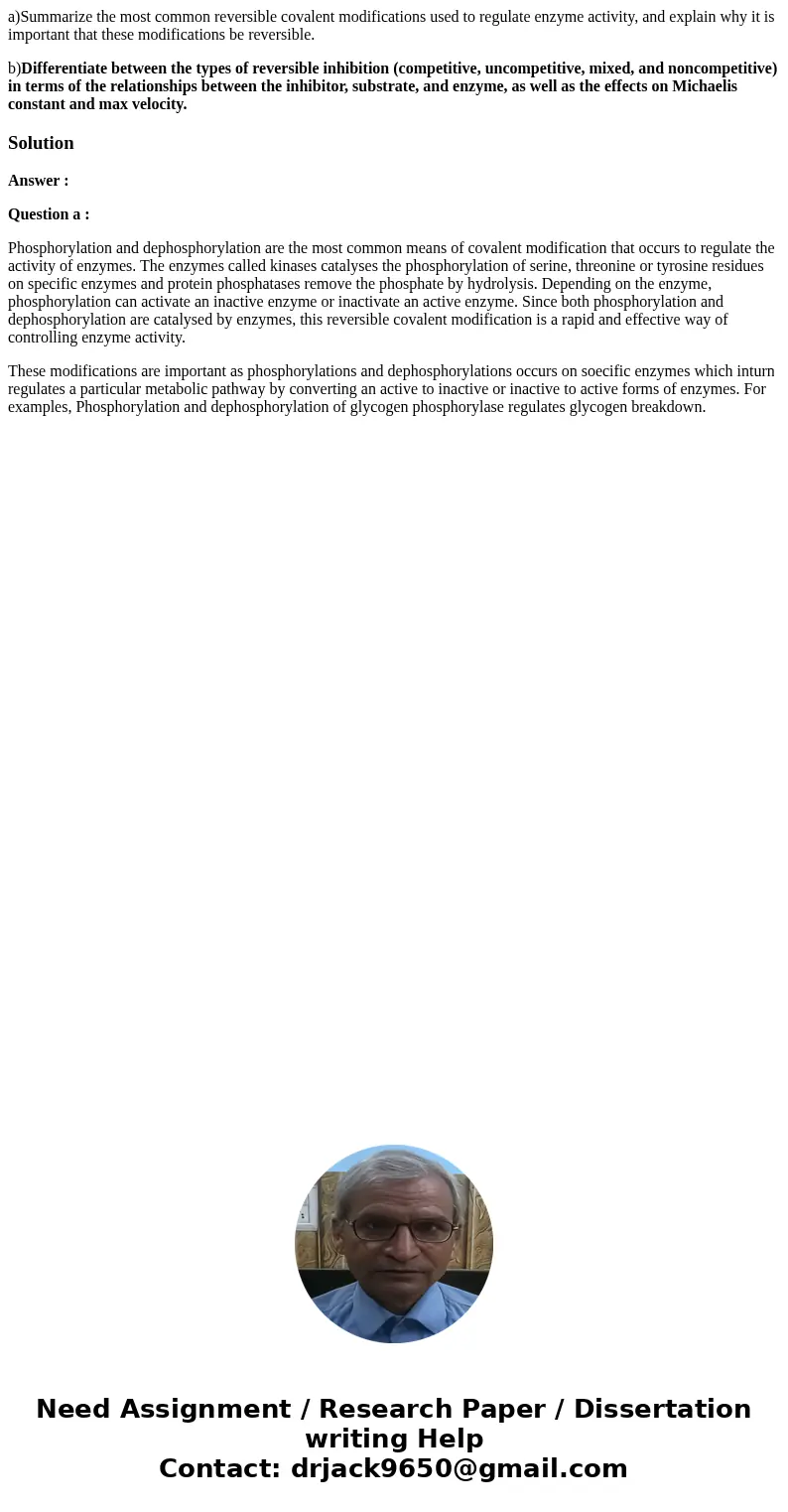aSummarize the most common reversible covalent modifications
a)Summarize the most common reversible covalent modifications used to regulate enzyme activity, and explain why it is important that these modifications be reversible.
b)Differentiate between the types of reversible inhibition (competitive, uncompetitive, mixed, and noncompetitive) in terms of the relationships between the inhibitor, substrate, and enzyme, as well as the effects on Michaelis constant and max velocity.
Solution
Answer :
Question a :
Phosphorylation and dephosphorylation are the most common means of covalent modification that occurs to regulate the activity of enzymes. The enzymes called kinases catalyses the phosphorylation of serine, threonine or tyrosine residues on specific enzymes and protein phosphatases remove the phosphate by hydrolysis. Depending on the enzyme, phosphorylation can activate an inactive enzyme or inactivate an active enzyme. Since both phosphorylation and dephosphorylation are catalysed by enzymes, this reversible covalent modification is a rapid and effective way of controlling enzyme activity.
These modifications are important as phosphorylations and dephosphorylations occurs on soecific enzymes which inturn regulates a particular metabolic pathway by converting an active to inactive or inactive to active forms of enzymes. For examples, Phosphorylation and dephosphorylation of glycogen phosphorylase regulates glycogen breakdown.

 Homework Sourse
Homework Sourse